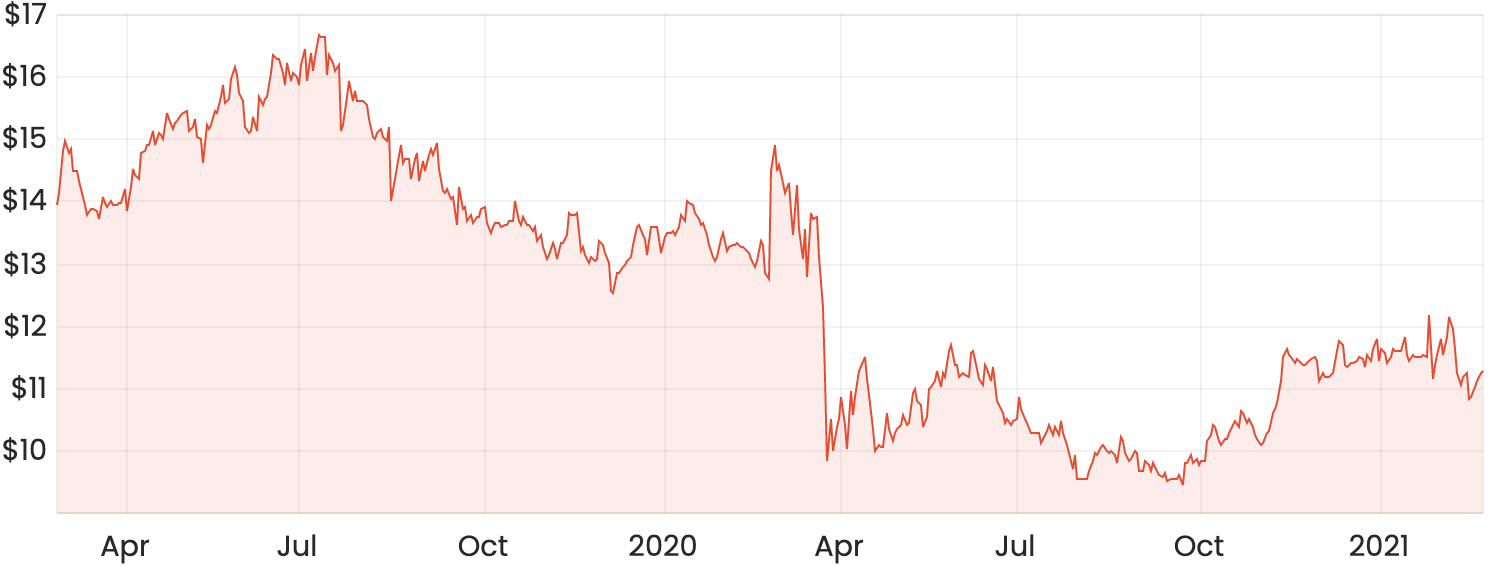The InvoCare Limited (ASX: IVC) share price traded flat today after the company released its FY20 results, which were more or less in line with investors’ expectations.
Conditions have been challenging for InvoCare since the onset of COVID-19, which has significantly disrupted the industry. Here are the details.
IVC share price chart

COVID-19 impacts
The group reported statutory revenue of $477.7 million for the year, down 4.5% on the prior corresponding period (pcp). Contractual wage increases and a high fixed cost base resulted in a 29% drop in EBITDA, coming in at $102.5 million for the period.
InvoCare indicated that death rates have dropped across the period by roughly 3.3% and 4.8% in Australia and New Zealand, respectively.
Social distancing restrictions and funeral attendee limits have also severely impacted revenue in Q2 and Q3, but CEO Oliver Chretien said that it “is pleasing to see how resilient the business and our people have been” despite the challenges the company has faced during the year.
InvoCare bolstered its balance sheet by $274 million through a capital raising back in April last year. These funds were primarily used to pay down $111 million in debt and improve the company’s liquidity position and other debt metrics.
While InvoCare seems to be in a fairly strong position with $119 million currently in cash, it’s worth noting the effect of the capital raise on earnings per share (EPS), which fell 61% on the pcp to 20.4 cents.
InvoCare reported a loss after tax of $9.2 million and declared a final fully franked dividend of 7 cents per share.
The road ahead
While short-term conditions are expected to be volatile due to further COVID-19 impacts, management seems to be confident about the longer-term outlook. This will ideally be driven by positive industry dynamics supported by a growing and ageing population.
Looking ahead over the next decade, Australia and New Zealand’s death rates are forecasted to grow at a compound annual growth rate (CAGR) of 2.5% and 1.6%, respectively.
InvoCare’s $200 million Protect and Grow Strategy continues to be rolled out across Australia and New Zealand, with the goal of delivering new, refreshed and enhanced shop fronts that will expand and improve its current portfolio of sites.
My take on InvoCare’s result
While the certainty of death could provide a solid basis to an investment case, I don’t think I’d be a buyer of InvoCare shares at these levels.
It’s worth noting that the Protect and Grow initiative was announced shortly after management acknowledged in 2016 that the competitive landscape was changing as a result of differences in consumer preferences, evidenced by its decline in market share over the past year.
This $200 million program intended to reverse the market share decline was funded 100% with debt, which, given the company’s cash-generating ability, seems fairly high on a relative basis.
Something else to point out is that the long-term incentives of InvoCare’s management team are tied to CAGR EPS growth, which would be unaffected by the increased capital expenditures compared to funding the program through an equity raising.
Personally, I’d be wanting to see how InvoCare performs in a post-COVID environment. But more importantly, how the Protect and Grow strategy continues to unfold and the effect this has on the underlying business.
In my view, the current valuation seemed stretched even compared to InvoCare’s FY19 net profit of $63 million, which would translate to a price-to-earnings (P/E) multiple of roughly 26.
Operating net profit for FY20, which excludes certain items such as non-operating activities and impairment losses, was $27.3 million for the year, putting shares on a current trailing P/E of just under 70.
I think there are some other ASX growth shares that represent better value at the moment. For some more ideas, click here to read: 2 high-quality ASX retail shares that offer superb value for money.











